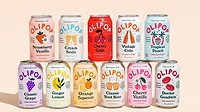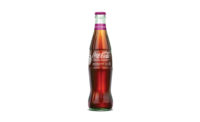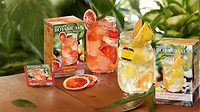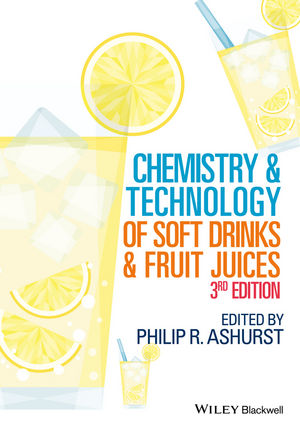2023 State of the Beverage Industry | Consumers call for low- or zero-sugar carbonated soft drinks
Traditional carbonated soft drinks fall flat amongst consumers

Image courtesy of The Coca-Cola Co.
As more consumers desire less sugar in beverages, many carbonated soft drinks (CSD) producers are diversifying product offerings, including low- and zero-calorie products, as well as flavored options to help spur growth within the category.
Arielle Rose, senior industry research analyst for IBISWorld, New York, noted in Beverage Industry’s April issue that the sales of CSDs in the United States “have gone flat.” She pointed to health concerns surrounding CSDs as the reason for the category’s decline.
“The government, media platforms and even soft drink producers themselves have vocalized the consequences of consuming artificially sweetened diet soda and how drinking large volumes of regular soda can lead to obesity,” Rose said in Beverage Industry’s April issue. “Studies during the pandemic have linked soda consumption with severe cases and virus deaths, as sugar tends to lead to comorbidities including obesity, diabetes and hypertension.”
She added that consumers are opting for healthier beverages above traditional CSDs, and that laws limiting soda sales and taxes on soda have negatively impacted CSD sales.
“While traditional carbonated soft drinks [sales] have plunged, many producers have been incorporating new products to retain consumer demand, including low- and zero-calorie versions of carbonated soft drinks, as well as non-carbonated options to cater to health-conscious consumers,” Rose explained in Beverage Industry’s April issue.
Consumer desire for less sugar in beverages has encouraged CSD makers to “diversify their product offerings” and help them stay afloat amid a traditional sinking market, she added.
“To counter declining sales of traditional carbonated soft drinks, producers have expanded low- and zero-calorie offerings often sweetened with supposed non-nutritive sweeteners like aspartame, sucralose or stevia,” Rose said in Beverage Industry’s April issue. “Additionally, some companies have shifted their focus toward non-carbonated beverage options, including bottled water, flavored water and ready-to-drink teas, which tend to be lower in sugar and calories.”

Gary Hemphill, managing director of Beverage Marketing Corporation (BMC), New York, explained in Beverage Industry’s April issue, that the CSD category “has proven to be resilient in the face of higher prices and intense competition from other categories,” noting that reduced sugar CSDs were driving growth in the category.
“Improvements in taste thanks to newer sweeteners have helped to drive the growth. … The growth of reduced sugar CSDs has been the most important driver in the success of the category,” Hemphill said in Beverage Industry’s April issue. “In addition, performance of the foodservice channel continues to improve, as many consumers strive to move beyond COVID-19.”
Companies like Purchase, N.Y.-based PepsiCo have upgraded their zero sugar beverage portfolio. PepsiCo announced a new and improved Pepsi Zero Sugar, with an updated recipe that uses a new sweetener system, achieving a bolder taste.
BMC’s Hemphill pointed out activity in new flavor innovations, but said it still has its obstacles.
“Flavor innovation continues to bring meaningful innovation to the category, but the challenge has been to maintain the growth of a new flavor,” he noted in Beverage Industry’s April issue.
IBISWorld’s Rose said that new flavorings in the CSD category can attract a larger consumer base.
“Additionally, these producers have diversified their carbonated soft drink portfolio with new flavors to capture more consumer attention,” she stated in Beverage Industry’s April issue. “For example, limited edition seasonal or holiday flavors, flavor fusions combining two or more flavors and natural flavors derived from plants or fruits have proven successful for soft drink producers.
Earlier this year, Keurig Dr Pepper Inc. (KDP), Burlington, Mass., and Frisco, Texas, revealed Strawberries & Cream, a new flavor innovation available in Regular and Zero Sugar.

“Dr Pepper Strawberries & Cream is an exciting evolution for our brand’s flavor portfolio as it joins our permanent lineup alongside popular varieties such as Dr Pepper & Cream Soda and Dr Pepper Zero Sugar,” said John Alvarado, senior vice president of Dr Pepper Brand Marketing, in a statement at the time of the launch. “We can’t wait for people to try this delicious new treat.”
In BMC’s report titled “Carbonated Soft Drinks & Sparkling Functional Beverages in the US Through 2026: Market Essentials,” the company notes that “there is not expected to be a sea-change in the fate of CSD flavors in the next five years.”
BMC data from 2021 shows that the top CSD flavors are as follows: Cola (50.4%), Heavy Citrus (11.5%), Lemon-Lime (10.9%), Pepper (11.4%), Orange/Flavors (4.6%), Root Beer (3%) and Others (8.3%).
The report also shows projected CSD volume by flavor for 2026. The projections are as follows: Cola (49.2%), Heavy Citrus (11.3%), Lemon-Lime (11%), Pepper (12.5%), Orange/Flavors (4.3%), Root Beer (2.7%) and Others (9%).
“As per the usual trend, cola will shed share and thus lose a majority of CSD volume in 2026,” it states. “‘Other’ flavors, which includes club soda and seltzer, will see the second-biggest share rise, going from 8.3% in 2021 to 9% in 2026.”
IBISWorld’s Rose noted in Beverage Industry’s April issue, that with more consumers searching for drinks with health benefits and functional properties, it has propelled CSD producers to deliver.
“First off, CSD producers have implemented low-sugar and low-calorie options, appealing to health-conscious consumers looking to cut down their sugar intake,” she explained in Beverage Industry’s April issue. “Also, some CSDs are now infused with vitamins like B12 or C, which are perceived to offer immune support or enhanced energy.”
BMC’s Hemphill added that more functional CSDs have entered the market, “especially with regard to pre- and probiotics.” While the number of these brands has increased, they make up a very small part of the overall CSD category, he noted in Beverage Industry’s April issue.
An ongoing trend with consumers that Rose pointed to is improving time management, as they are often on the hunt for CSD options that are convenient for on-the-go. Sustainability also is important to consumers, which can influence the ingredients and packaging that CSD-makers use, she added.
“This has contributed to more producers offering portable and single-serve options,” Rose explained in Beverage Industry’s April issue. “Another consumer trend has surrounded health and wellness, prompting soft drink producers to create artisanal, craft options with natural sweeteners and, overall, healthier ingredients. Many consumers are willing to pay more for these beverages that are considered higher quality and premium, compared with traditional carbonated soft drinks.”
Rose noted that hybridization is another growing trend, which has encouraged producers to diversify their offerings.
“In that regard, many beverage manufacturers have incorporated CSD varieties with flavor blends, as well as blends of soda with other beverage categories,” she stated. “For example, some producers have blended soda with tea, juice, energy drinks and coffee to appeal to ever-changing consumer tastes.”
She pointed to The Coca-Cola Co.’s Coca-Cola with Coffee as a prime example of such hybridization. It contains “nearly double the amount of caffeine compared with a traditional can of Coke.” Rose added that, while the craft CSD category is still niche, its popularity has grown on consumers who are looking for unique beverages.
“Most craft beverage producers are known for their natural ingredients, including natural sweeteners like agave or honey, can sugar and juices from real fruit,” she said in Beverage Industry’s April issue. “Also, some craft CSDs are offered in special flavors not found in mass-produced traditional CSDs, such as ginger, cinnamon, coffee and cucumber.”
Rose added that the craft soda brands often use ingredients that are locally sourced, along with bold packaging and appealing branding, which can entice potential customers. However, BMC’s Hemphill noted that it can be a struggle for these craft CSD brands to compete with big-name category brands.
Going forward, Rose suggested in Beverage Industry’s April issue that CSD producers will need to adapt and evolve away from the traditional CSD scene along with consumers.
“More specifically, expansively health-conscious consumers will be enticed by additional low-calorie and low-sugar beverage options, as well as those with added vitamins, prebiotics and probiotics,” she said in Beverage Industry’s April issue. “Meanwhile, hybridization will allow consumers to enjoy unique taste experiences and sustainable packaging will cater to consumers concerned with the well-being of the environment. Personalized CSDs will provide a more customized experience for consumers looking for more interesting alternatives to traditional CSDs.”
Looking for a reprint of this article?
From high-res PDFs to custom plaques, order your copy today!










